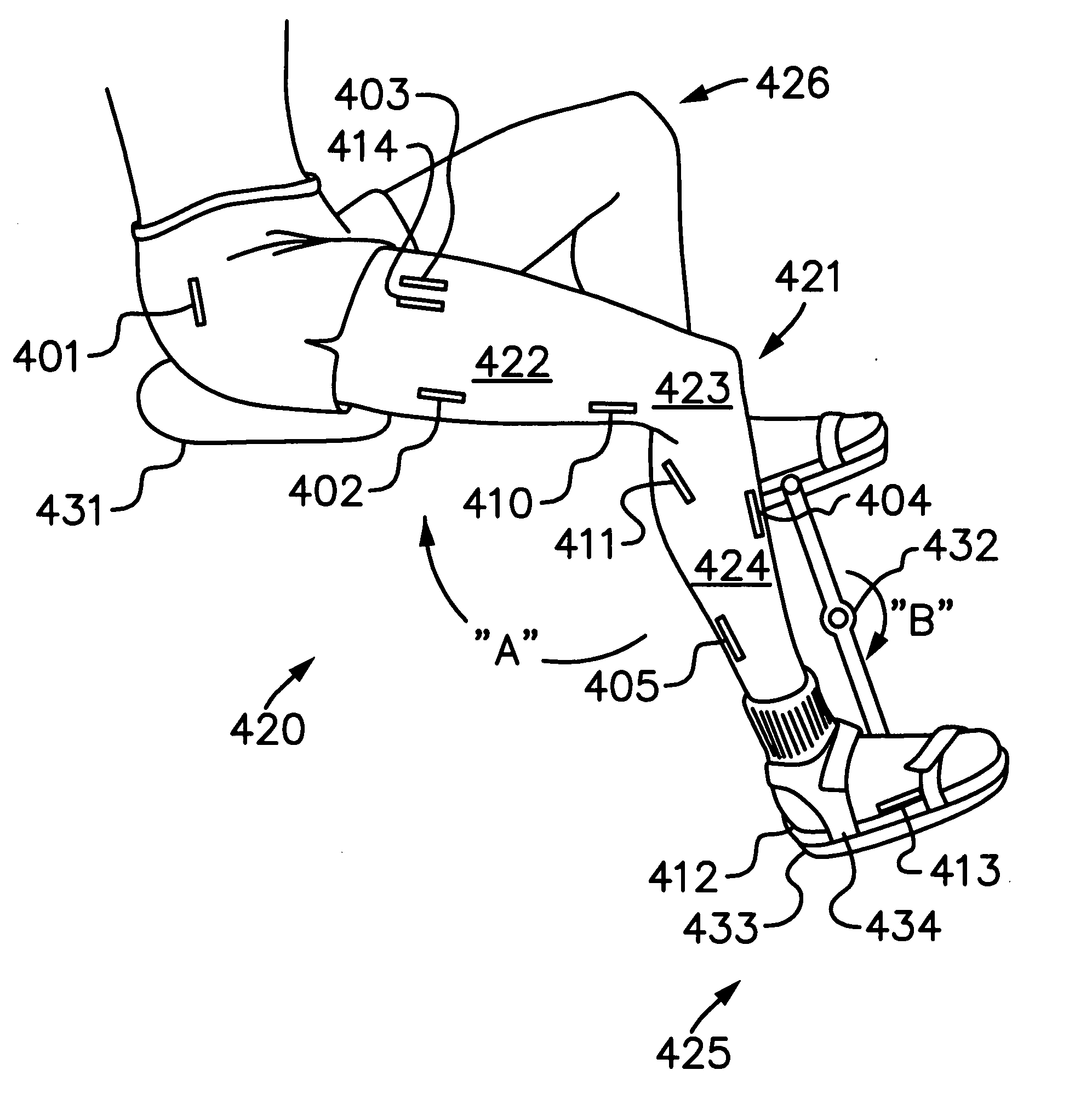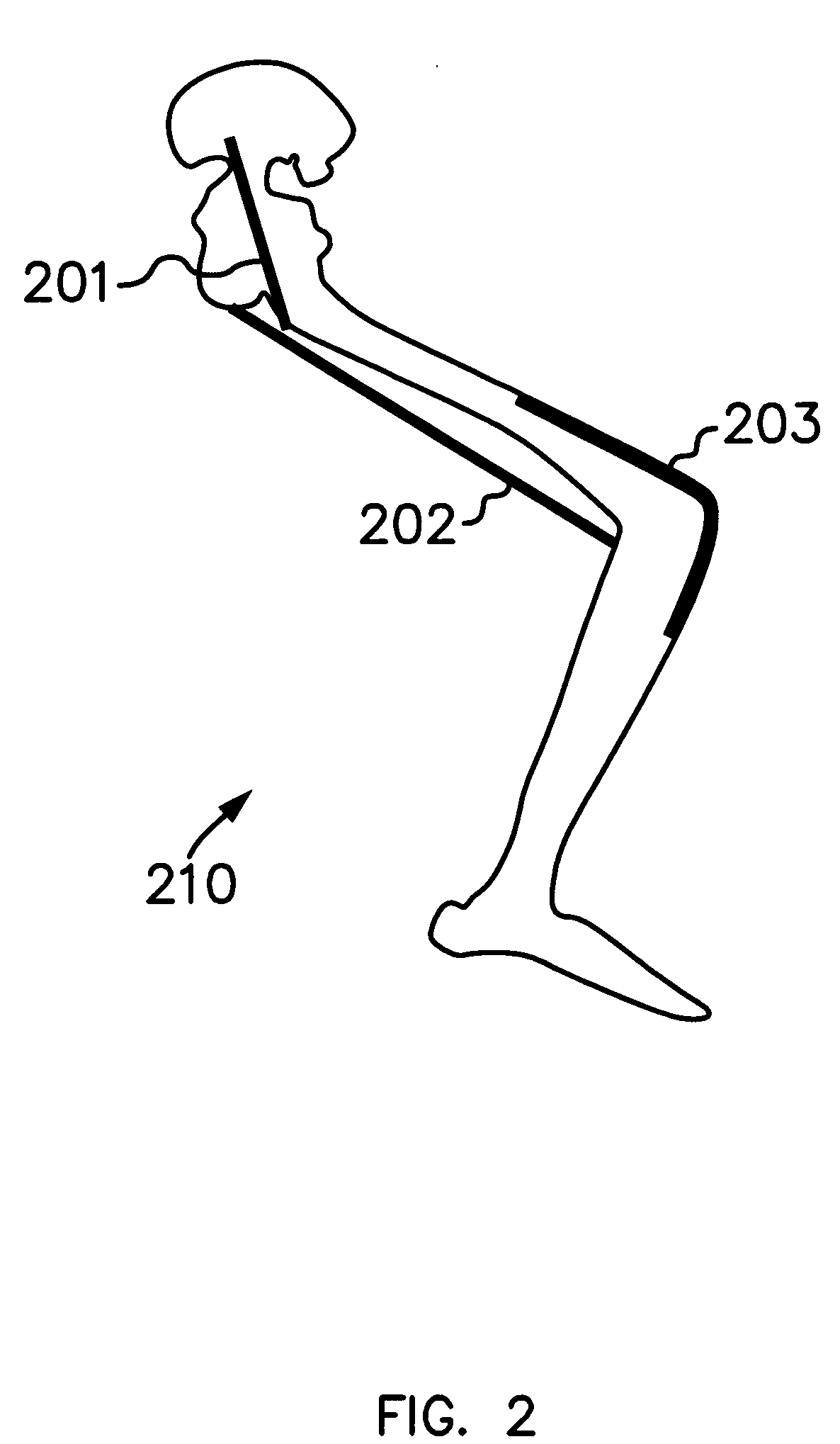System for functional electrical stimulation
a functional electrical stimulation and functional technology, applied in the field of functional electrical stimulation systems, can solve the problems of insufficient physical strain in the daily life of typical sci individuals to improve or maintain physical capacity, increase the risk of secondary diseases, and all three approaches suffer from significant limitations that confine their widespread us
- Summary
- Abstract
- Description
- Claims
- Application Information
AI Technical Summary
Benefits of technology
Problems solved by technology
Method used
Image
Examples
Embodiment Construction
[0022]FIG. 1 is a simplified block diagram of a system 100 for functional electrical stimulation (FES). Stimulators 101, 102 and 103 and sensors 110, 111 and 112 are implanted below the skin 140 of a person. Controller 130 is a system control unit and communicates with the stimulators 101, etc. via wireless communications link 120. Controller 130 also communicates with sensors 110, etc. via wireless communications link 121. Stimulators 101, etc. and sensors 110, etc. can be battery powered and receive power from controller 130 through a coil (not shown) generating a magnetic field. Controller 130 includes a closed loop control system, which uses feedback received from a variety of sensors to control the FES during an exercise session. Implanted stimulators, implanted sensors and the wireless control of stimulators and sensors are described in U.S. Pat. Nos. 5,193,539; 5,193,540; 5,324,316; 5,405,367; 6,175,764; 6,181,965; 6,185,452; 6,185,455; 6,208,894; 6,214,032; and 6,315,721, wh...
PUM
 Login to View More
Login to View More Abstract
Description
Claims
Application Information
 Login to View More
Login to View More - R&D
- Intellectual Property
- Life Sciences
- Materials
- Tech Scout
- Unparalleled Data Quality
- Higher Quality Content
- 60% Fewer Hallucinations
Browse by: Latest US Patents, China's latest patents, Technical Efficacy Thesaurus, Application Domain, Technology Topic, Popular Technical Reports.
© 2025 PatSnap. All rights reserved.Legal|Privacy policy|Modern Slavery Act Transparency Statement|Sitemap|About US| Contact US: help@patsnap.com



